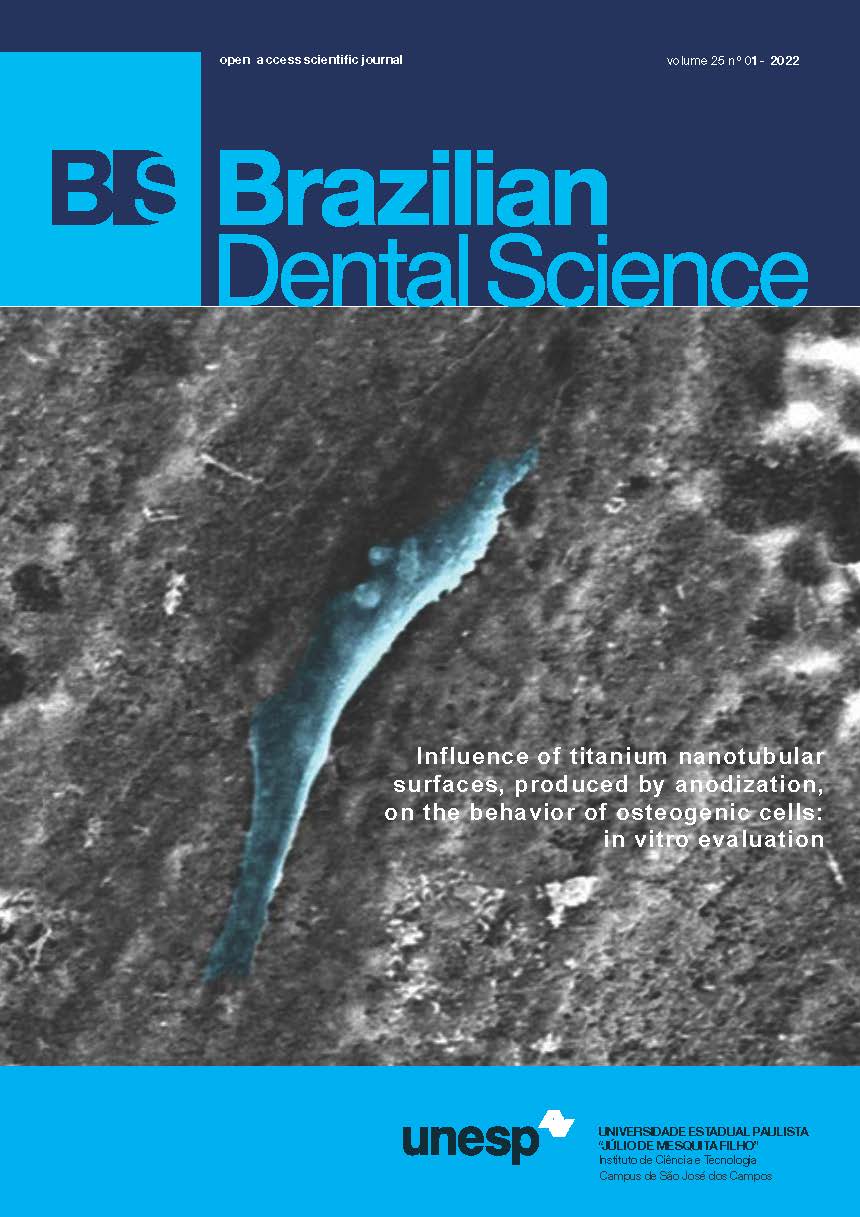Esthetic patient satisfaction, marginal bone loss and peri-implant tissue success in esthetic zone: systematic review
DOI:
https://doi.org/10.4322/bds.2022.e2514Abstract
Increased patient demands for highly esthetic implant superstructure in the anterior esthetic zone has increased in
the last decades. Moreover, the absence of periodontal ligament in implant supported prosthesis causes forces to
be transferred without cushioning effect to the alveolar bone, resulting in increased marginal bone loss (MBL) and
influence the heath of peri-implant tissue. Evaluate the available evidence on the effect implant superstructure and
it consequences on patient satisfaction, MBL, bleeding on probing (BOP) and probing depth (PD). A protocol of
electronic and hand research was performed for English based researches comparing implants inserted in the esthetic
zone with all ceramic superstructure: “Will the use of different types of all ceramic superstructure show different
esthetic patient satisfaction, marginal bone loss, bleeding on probing and probing depth? Thirteen publications
from one thousand one hundred and sixteen research studies were included. This systematic review showed that all
ceramic implant superstructure was a versatile treatment option with higher esthetic patient satisfaction and better
color of peri-implant mucous especially in patients having thin biotype. On the other hand there wasn’t significant
difference in MBL, PD and BOP compared to other conventional implant superstructure. More randomized controlled
clinical trials with bigger samples are needed to confirm our findings. All ceramic implant superstructure is versatile
and highly esthetic treatment option for implant placed in the anterior esthetic zone.
KEYWORDS
Esthetic; Patient satisfaction; Tissue success; Marginal bone loss; Superstructure.
Downloads
Downloads
Published
Versions
- 2022-03-29 (2)
- 2022-01-27 (1)
How to Cite
Issue
Section
License
Brazilian Dental Science uses the Creative Commons (CC-BY 4.0) license, thus preserving the integrity of articles in an open access environment. The journal allows the author to retain publishing rights without restrictions.
=================




























